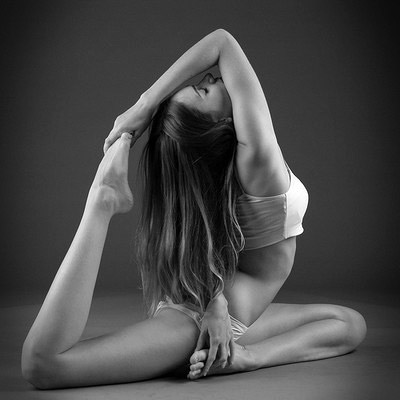A yoga pose is called asana in Sanskrit, and according to Yoga Sutras of sage Patanjali, it is a static pose of physical body. We often perceive asanas to be exercises that develop joint’s flexibility and muscle strength. Yoga poses provide a massage for internal organs and improve their blood circulation. If you do them regularly your whole body gets properly stimulated and fit, you attain a good health and an attractive body shape.
The flexibility is often associated with youth and health. Due to sedentary lifestyle we almost lost our natural flexibility, so when we take to the asanas we need to do them carefully in the beginnings, putting the needed attention to the body. There is no need for forcing yourself into asana, if you cannot bend your body to the required degree. You can also use yoga straps to help yourself.
Do not hold the pose too long, if you feel uncomfortable or the fatigue is growing due to it. Listen to your body while doing yoga asanas, and you will not have any problems during yoga routines.
Before you start your practice, examine the described technique carefully – this is really important! On the beginning stages of yoga practice the precise knowledge of the asana technique can save you from potential injury.
Another important thing is the relaxation. It is just as important as the asana performance itself. Relaxation can be done four times during the practice:
- Before you start (optional, but can help to get into the right mood and prepare your body)
- Between the poses (also optional, and is done when you feel slightly tired but want to complete your regular routine)
- In certain asanas (sometimes it is required – depends on the particular yoga pose, for example, in padmasana or paschimottanasana)
- In the end of your practice (a must – it will help spreading the energy evenly across the body)
When you finish your routine, you must do shavasana – the most well known relaxation pose in yoga. You can do this asana before, during and at the end of your practice. If you do it between asanas, it should last for 27 heart beats, and in the end of the practice, shavasana should be performed for 3-10 minutes.
Asana practice is done on a comfortable yoga mat – its length, width and thickness are individual, so choose it according to your needs and likes. Things to pay your attention to are the stickiness of the mat and the thermal insulation if you have to do yoga on a cold floor. But the main thing is the comfort, since the mat is your best friend in your practice!
Never do yoga poses after the meals! The best time for yoga is before the breakfast or before the dinner, in the evenings. If you cannot do it at these time frames, then make sure you do yoga not earlier than 2 hours after the meals (can be 1.5 after light meals, and up to 3 hours after heavy meals).
Don’t forget the breathing! Asana and pranayama (the breathing exercises) always come hand in hand. Asana creates a structure for the energy flow, and pranayama controls that flow. They complement each other.
The third thing after asana and pranayama is the attention. Actually, we cannot grade them: 1st, 2nd; all three are very important and without them the practice will be much less successful.
To recap:
- Know the technique
- Do not push too much
- Listen to your body
- Don’t forget to relax
- Keep your breathing under control
- Be attentive


That was really interesting, i o yoga 4 times aweek not much relaxation though astanga yoga we dolots of poses:-)x I have a prolapsed disc that is lying on my sciatic nerve, its very painful and i use tramadol for the pain from the doctors and ibrofen together. I was doing pilates too but hurt my back more so do you think i do anything wrong? I do try and mend my back with yoga :-):-)xx
Hi, Sharon,
Doing yoga 4 times a week is fine. Ashtanga-vinyasa yoga is a dynamic style (I assume you are talking about Pattabhi Jois style), but the relaxation is still necessary. The idea behind proper relaxation is the energy distribution throughout the body. This energy is called prana and is responsible for maintaining all the bodily systems in a healthy state. In the case of prolapsed disc, you need to be extra careful with powerful styles, and it is better to practice under the guidance of a yoga therapist.
What you can do now is to reduce the intensity of your yoga practice. Slow down a bit when doing yoga asanas. Probably switching to some other yoga style might do the work for you.
Yoga is generally safe when properly followed. And yes, you can fix your back with yoga. You simply need to do these things:
– Practice regularly;
– Do not hurry;
– Get an expert advice on your back from a person who can observe you;
– Slow down in your yoga routine;
– Listen to your body while practicing;
– Learn how to relax.